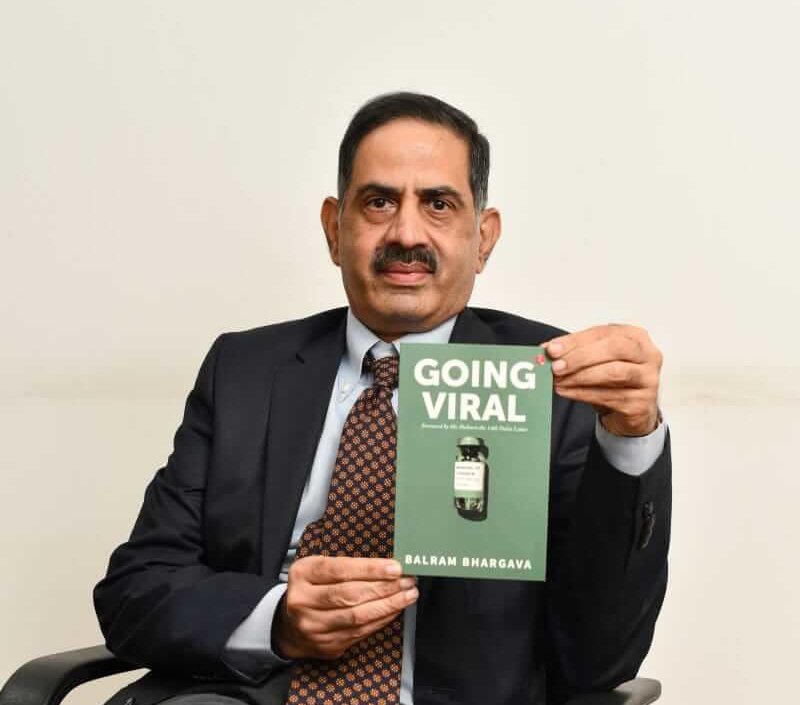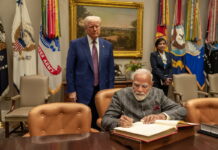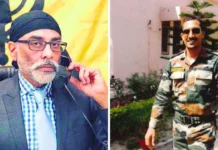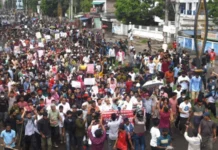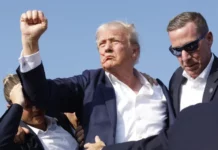India Post MD & Jt. Editor Capt Krishan Sharma interviews Dr. Bhargava on the release of his book “Going Viral”
Dr Bhargava, when and how did India find that COVID-19 was Pandemic?
India had been really proactive since the outbreak started in Wuhan, China. It took requisite steps to contain the outbreak. WHO declared COVID 19 as Public Health Emergency of International Concern (PHEIC) in January 2020 but India released its travel advisory much before on 17th January 2020. It started screening international passengers earlier than most countries’ halted flights from China, began isolation of affected individuals and tracing their contacts from the very first case. By the 29th case the government devised a multi-pronged strategy to tackle the spread of the virus with the Union Health Ministry direction to form rapid response teams at district, block and village levels.
Since 13th March 2020, when WHO declared the pandemic and cases in India were close to 80 and first death was reported, all visas from affected countries were suspended and even Indian citizens were mandated restrictions. With the increase in cases, districts were identified and put on lockdown followed by a 21-day national lockdown to contain the spread of COVID-19 outbreak.
How long did it take India to isolate the virus?
The virus was first isolated in India during the second week of March 2020 by ICMR- National Institute of Virology, Pune. India was the fifth country at the time to isolate virus when the number of cases detected in the country was less than hundred.
Of all the actions taken where does India stand compared to other Nations?
Keeping in mind geographical and demographical diversity of India, situation in India is much better than many other countries till now. It has all been possible due to rigorous and joint efforts of all departments of Government of India.
India has adopted a calibrated testing approach since the start of pandemic. India has achieved the milestone of conducting 77-crore tests till now.
The total number of diagnostic laboratories has reached 3309 with a testing capacity of around 30L-per day. It is to be noted that in January 2021, India had only one testing laboratory. ICMR has also approved India’s first self-use Rapid Antigen Test (RAT) for COVID-19 and is encouraging self-test kits to reduce queues in laboratories, reduce costs, dissipate the burden on existing manpower for sample collection from homes, and provide results without delay. It may be visible from global data that the Case Fatality Rate (CFR) has dropped drastically in comparison to the start of pandemic due the intervention of steroids and vaccines.
Doc, you have mentioned in your book that you were able to disseminate surveillance plan 5-days before WHO? How did you do that?
The guidance document for POEs, states and UTs for surveillance of 2019-nCoV was released as early as 25th January 2020, much before WHO declared it PHEIC. The number of cases from 30th January to first of March was limited to 3. Since mid-February, as surveillance measure the SARI (Severe Acute Respiratory Illness); patients from 41-sentinel sites were tested for COVID-19 to rule out community spread. All the requisite measures were taken to contain the spread and simultaneously testing capacity was increased in view of future preparedness. With increase in cases and evolving epidemiology of the disease, testing and surveillance protocols were expanded and revised. Government of India’s effort has been pre-emptive till now with reference to disease spread in the country.
When did ICMR plan to test these deadly viruses in India?
As soon as China reported the unknown respiratory infections, immediately Apex lab of India, ICMR-NIV, Pune, started preparing procurement of reagents, testing the primers and probes, so that as soon any suspected case arrive in India we can immediately start testing.
What percentage of India’s GDP is spent on Healthcare? Say, for example compare to US.
United States spends over 16% of their GDP in public healthcare. India’s Health expenditure is around 1.5% of GDP. However, through the mega schemes launched in last few years like Ayushman Bharat Pradhan Mantri Jan Arogya Yojana (PM-JAY), Pradhan Mantri Ayushman Bharat Health Infrastructure Mission (PM-ABHIM), Ayushman Bharat Digital Mission, the Government of India is committed towards increase this in phase-wise manner.
You mentioned India is the Pharmacy Capital of the world where we could produce expensive drugs at much cheaper price including vaccines?
Yes, till now India has taken lead in manufacturing drugs and vaccines at affordable rates that are provided to the whole world. Now, we have moved to the discovery and development part of it. As seen with COVAXIN, we developed the indigenous vaccine from scratch in less than 10 months. Next indigenous vaccine was ZydCoV-D. The drive has gained momentum and we are on the path to become self-reliant in the area of vaccine and drug development.
How were you able to produce COVAXIN in India and in such a short time? Where did you produce COVAXIN?
During first half of 2020, the whole world was in a race to contain the pandemic with accelerated research for developing vaccines and therapeutics. The best bet at that time was to go for a traditional vaccine. Purified inactivated viruses have been traditionally used in vaccine development and have been licensed for decades with well-established safety profiles. But this traditional platform required a set up for virus propagation in bulk i.e., a bio safety level-3 laboratory. Thus Bharat Biotech International Limited (BBIL), Hyderabad, a company with prior experience in developing inactivated vaccines and with the BSL-3 facility, was chosen by ICMR for collaboration. BBIL also had availability of well-characterized Vero cell GMP manufacturing platform. A MoU was signed with BBIL and the fully characterized isolate was transferred on April 30th 2020.
The vaccine candidate after the successful safety and immunogenicity evaluation was given Phase I human clinical trial approval in India.. With the Phase I trial and the preclinical data, the vaccine candidate got approval for the Phase II/III trial. The scientific teams of BBIL and ICMR team were in close touch during the entire process right from the vaccine candidate preparation till the final Phase III trials supporting each other. Within a record time of 8 months, COVAXIN got Emergency Use Authorization in India.
I believe Bharat Biotech is planning to come out with Nasal Vax, when do you expect that to be achieved?
The vaccine has reached the phase-3 stage already. After the trial is completed and results are deliberated by Subject Expert Committee of regulatory bodies, the vaccine should be out.
You had mentioned that basically you are a Cardiologist at AIIMS earlier. Now being the Director General of ICMR, especially during this most difficult time, which is more challenging for you?
Being a public health expert and leader is very challenging time especially, if you arrive in time when you have to deal first with Nipah and then COVID-19 pandemic, and need to work in multi-sectorial framework to assure the systems become functional, and we could save lives. The pressure and expectation are very high in comparison to working on few patients. Here policy and each decision affect millions.

